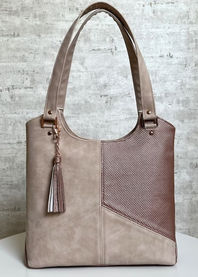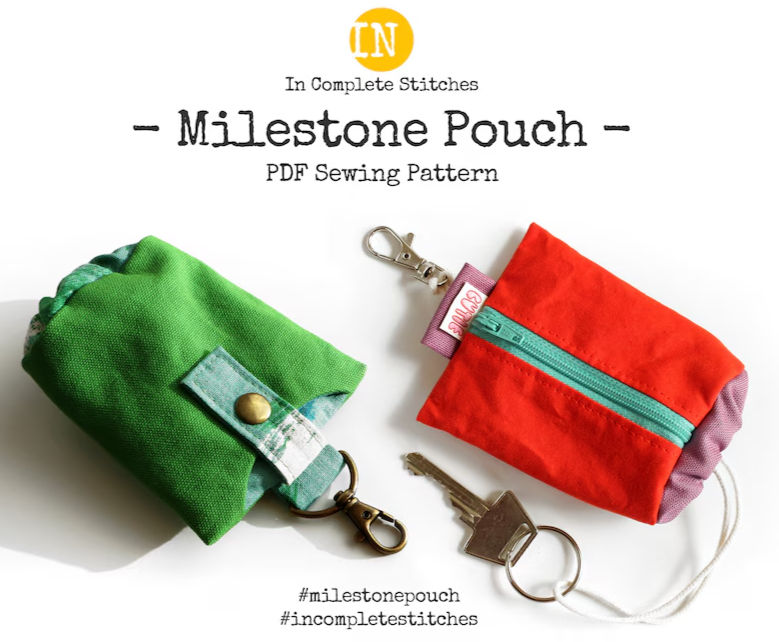Unleashing the Versatility of Vinyl: A Guide to Using It in Bag Making
- Susan

- Nov 5, 2023
- 3 min read
Updated: Apr 3, 2024
The world of bag making is vibrant and ever-evolving, with new materials popping up on the horizon, giving designers and hobbyists alike a plethora of choices for their creations. Among these, vinyl has emerged as a stalwart component, revered for its durability, versatility, and aesthetic appeal. But not all vinyl is created equal. The term 'vinyl' encompasses a range of materials, each with its own unique properties and uses in the realm of bag making. In this blog post, we'll delve into the different types of vinyl that have carved a niche in the bag making industry.

Traditional PVC Vinyl PVC, or polyvinyl chloride, is the most commonly recognized form of vinyl. It's a flexible, plastic-like material that can be as supple as fabric or as rigid as plastic, depending on how it's processed. In bag making, PVC vinyl is often used for its water-resistant properties and ease of cleaning. It comes in an array of colors and finishes, from clear and transparent to opaque and patterned, making it a favorite for everything from children's backpacks to high-fashion totes.
Marine Grade Vinyl As the name suggests, marine grade vinyl is designed to withstand the harsh conditions of marine environments. It’s UV and mildew resistant, which also makes it a perfect candidate for outdoor gear. In the context of bag making, marine vinyl is an ideal choice for beach bags, boating bags, and any carryall that’s likely to face sun, sand, and water. Perfect for beach bags!
Upholstery Vinyl Upholstery vinyl is a heavy-duty material typically used for furniture but has been adopted by bag makers for its robustness and high-end finish. It's thicker than other types, offering more body and structure to a bag. Additionally, it comes in various textures, mimicking the look and feel of leather or other exotic skins without the ethical concerns associated with animal products. Ideal for handbags!
Glitter Vinyl Who doesn’t love a bit of sparkle? Glitter vinyl brings a playful edge to bag making, embedded with shiny particles that catch the light beautifully. It's a hit for accessory pouches, children's bags, or any project where a touch of glamour is desired. Despite its flashy appearance, glitter vinyl is surprisingly durable and sews well, making it a practical as well as pretty option. Glitter vinyl is wonderful for making fun pouches.
Metallic Vinyl Metallic vinyl offers a lustrous, reflective surface reminiscent of metal, adding an edgy, contemporary vibe to bags. It's particularly popular in the fashion industry for statement pieces. Unlike actual metal, metallic vinyl, just like the vinyl used to make this Dayna pouch, is lightweight and flexible, making it much more suited to the functional requirements of a bag.
Printed Vinyl Printed vinyl allows for the most expansive range of designs, as virtually any pattern or image can be printed onto its surface. This type of vinyl is a canvas for creativity, making it possible for designers to produce limited-edition runs or custom designs for clients. It's also a boon for branding, as logos and brand patterns can be directly incorporated into the bag's design. A lovely example of printed vinyl can be seen with the Isolina Cross-body bag by BagsHandMade4U.
Stretch Vinyl This type has a bit of elastane mixed into the vinyl, giving it a stretchy quality that other types lack. Stretch vinyl is excellent for bags that need to expand a bit, like cosmetic bags or cases for electronic devices. It's also a choice material for accents and compartments that require a bit of give.
Eco-Friendly Vinyl With an increasing focus on sustainability, the bag-making industry is seeing a rise in eco-friendly vinyl options. These are often made from recycled materials or formulated to be more biodegradable than traditional vinyl. They cater to an eco-conscious market without compromising on the practical benefits that make vinyl so popular in the first place. Lunch and snack bags offer great opportunities to create with eco-friendly vinyl.

Each type of vinyl brings its own strengths to the table, and the choice of which to use will depend on the aesthetic and functional needs of the finished product. As technology progresses and concerns about sustainability grow, we can expect to see even more innovations in vinyl for bag making.
Whether a designer, a DIY enthusiast, or a consumer with a keen interest in materials, understanding the different types of vinyl and their applications can greatly influence the choices we make when it comes to the bags we design, make, or purchase. The future of bag making is indeed shiny, not just because of the glitter and metallic vinyls but because of the bright prospects of this versatile material in an ever-adaptive industry.
Resources for Vinyl:
Tips for sewing with vinyl:
Interested in incorporating vinyl into your bag-making process? Watch this informative video by fiercekittenz filled with useful tips and techniques tailored for bag creators using vinyl!
Subscribe to fiercekittenz at YouTube































